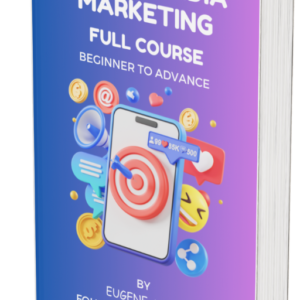Ever wondered why some ads seem to dominate search results while yours languish in the shadows? Enter the mysterious realm of Quality Score, Google’s hidden metric that dictates your ad’s fate. This guide will unveil its secrets and equip you with strategies to propel your Quality Score and your ads to the coveted top spots.
What is Quality Score?
The quality score is a grading system used in online advertising, particularly in platforms like Google Ads. It’s a measure of how well your ads, keywords, and landing pages align with what users are searching for.
Essentially, it evaluates the relevance and quality of your advertising content in relation to user queries. Factors like keyword relevance, click-through rates, and the user experience of your landing page contribute to this score.
A higher quality score often leads to better ad placement and can result in lower costs for your advertising campaigns.
Why does Quality Score matter?

#1. Cost-Effectiveness: A higher Quality Score translates to lower cost-per-click (CPC). Google rewards relevant and engaging ads with preferential pricing, meaning you pay less for each click your ad receives. This translates to stretching your budget further and maximizing your return on ad spend (ROAS).
#2. Prime Real Estate: Quality Score dictates your ad position on search results pages. A high score catapults your ad to the top, increasing its visibility and drastically boosting the chances of users seeing and clicking it. Think of it as premium shelf space in a supermarket – higher Quality Score gets you closer to the shopper’s eye.
#3. Campaign Performance Boost: High-quality ads naturally perform better, leading to:
- Increased click-through rates (CTRs): Relevant ads resonate with users, making them more likely to click.
- Improved conversion rates: Engaging ads and targeted landing pages lead to a higher percentage of clicks converting into actual sales or desired actions.
- Overall campaign efficiency: Quality Score acts as a domino effect, impacting all aspects of your campaign for the better.
#4. Valuable Insights: Quality Score provides diagnostic information on your ad’s strengths and weaknesses. It pinpoints areas for improvement, such as keyword relevance, ad copy effectiveness, and landing page optimization. This feedback loop allows you to fine-tune your campaigns for continuous improvement and peak performance.
#5. Competitive Edge: In a crowded online marketplace, standing out is crucial. A high Quality Score sets your ads apart, demonstrating to Google and users that you offer relevant and valuable experiences. This builds trust and establishes your brand as a reliable choice, giving you a distinct advantage over competitors with lower scores.
It should be noted that Quality Score is not a static number, it’s a dynamic process that responds to your ongoing efforts. Embrace optimization, analyze performance, and continuously strive for improvement.
What are the components of quality score?
#1. Expected CTR (Click-Through Rate): This predicts how likely someone is to click your ad after seeing it. It’s all about sparking immediate interest and making your ad stand out from the crowd.
Relevant keywords that accurately reflect your offerings are essential bait, while compelling ad copy laced with strong calls to action acts as the irresistible hook.
#2. Ad Relevance: This measures how well your ad aligns with the user’s intent and the keywords you’re targeting. It’s a test of accuracy and alignment. Imagine crafting a bespoke suit for your ad, tailored to the specific needs and desires of the searcher.
Choose keywords that truly mirror what users are looking for, and craft ad copy that resonates directly with their search query. Relevance is the golden thread that weaves trust and engagement.

#3. Landing Page Experience: Once you’ve hooked their attention with a click, it’s time to deliver on the promises of your ad. This is where the landing page enters the stage. It’s the grand finale, the fulfillment of expectations.
Does your landing page seamlessly match your ad? Does it offer a smooth, user-friendly experience that satisfies the searcher’s intent? Remember, relevance extends beyond the ad copy – it’s a journey that continues onto the landing page. Ensure clarity, fast loading times, and content that resonates with the ad that brought them there.
How do you get a 10 Quality Score?
While achieving a perfect 10 Quality Score is rare, reaching a consistently high score (8-10) is definitely achievable by following these core principles:
#1. Master the Three Pillars:
- Expected CTR: Conduct thorough keyword research to target relevant terms with high search volume. Craft compelling ad copy with strong calls to action that resonate with your chosen keywords.
- Ad Relevance: Ensure your ad text directly reflects the intent behind the targeted keywords. Tailor ad copy to specific user queries and avoid generic statements.
- Landing Page Experience: Offer a seamless and satisfying landing page experience that matches the ad’s promises. Prioritize clarity, fast loading times, and content that aligns with the user’s search intent.
#2. Monitor and Analyze:
- Regularly track your Quality Score and campaign performance metrics using Google Ads tools. Identify areas for improvement, such as low-performing keywords or irrelevant ad copy.
- A/B test different ad variations and landing page designs to gauge user response and optimize for better results.
- Stay updated on Google Ads best practices and algorithm changes to adapt your strategies accordingly.
#3. Advanced Techniques:
- Leverage negative keywords to exclude irrelevant search terms and prevent wasted ad spend.
- Segment your ad groups into thematically relevant categories to allow for more granular targeting and ad variations.
- Utilize ad extensions like location pins, phone numbers, or special offers to enhance ad visibility and user engagement.
#4. Patience and Persistence:
- Remember, Quality Score is not a one-time fix. Optimizing for higher scores takes time and ongoing effort.
- Set realistic goals and celebrate incremental improvements along the way.
- Consistent monitoring, testing, and refinement are key to maintaining a high Quality Score and reaping the benefits of cost-effective, high-performing Google Ads campaigns.
While aiming for a high score is important, focus on overall campaign performance as the ultimate goal. A well-optimized campaign with a steady score in the 8-10 range can still outperform one with a perfect 10 but poor CTR or conversions.
By diligently applying these strategies and maintaining a commitment to continuous optimization, you can significantly improve your Quality Score and watch your Google Ads campaigns soar to new heights of success.
Remember, the journey to a high Quality Score is a marathon, not a sprint – enjoy the process of learning and improvement, and your efforts will be rewarded with a thriving online presence and a booming business.
Google Ads Tools for Tracking Quality Score and Campaign Performance
While consistently monitoring your Quality Score and campaign performance is crucial, choosing the right tools can make the process efficient and insightful. Here are some valuable Google Ads tools you can leverage:
This report reveals the actual search terms triggering your ads, allowing you to analyze their relevance and identify potential negative keywords. It helps you understand users’ interpretations of your keywords and adjust your campaign accordingly.
#2. Auction Insights Report:
This report sheds light on your competitive landscape, showcasing your ad position compared to rivals and the estimated bids required to secure higher placements. Analyze these insights to refine your bidding strategies and optimize your cost-effectiveness.
#3. Landing Page Report:
This report evaluates the performance of your landing pages, providing metrics like bounce rate, average time on page, and conversions. Identify underperforming landing pages and diagnose issues like slow loading times or irrelevant content to improve user experience and boost conversions.
#4. Keyword Planner:
This tool helps you discover new keyword opportunities, estimate their search volume and competition, and forecast potential costs. Use this information to refine your keyword targeting and expand your reach to relevant audience
#5. Google Analytics:
While not directly a Google Ads tool, integrating Google Analytics provides a holistic view of your website traffic and user behavior. Track how users engage with your landing pages after clicking on your ads, identify conversion funnel leaks, and optimize your overall marketing strategy.
Choosing the right tools depends on your specific campaign goals and needs. Experiment with different reports and insights to find the ones that offer the most valuable information for optimizing your Google Ads performance.
Regularly check back on your chosen reports, analyze trends, and make data-driven decisions to continuously improve your Quality Score and maximize your campaign returns.
By equipping yourself with the right tools and insights, you can transform Quality Score tracking from a mundane task into a powerful engine for achieving Google Ads success. So, dive into the data, unlock the hidden gems within your reports, and watch your campaigns reach their full potential!





